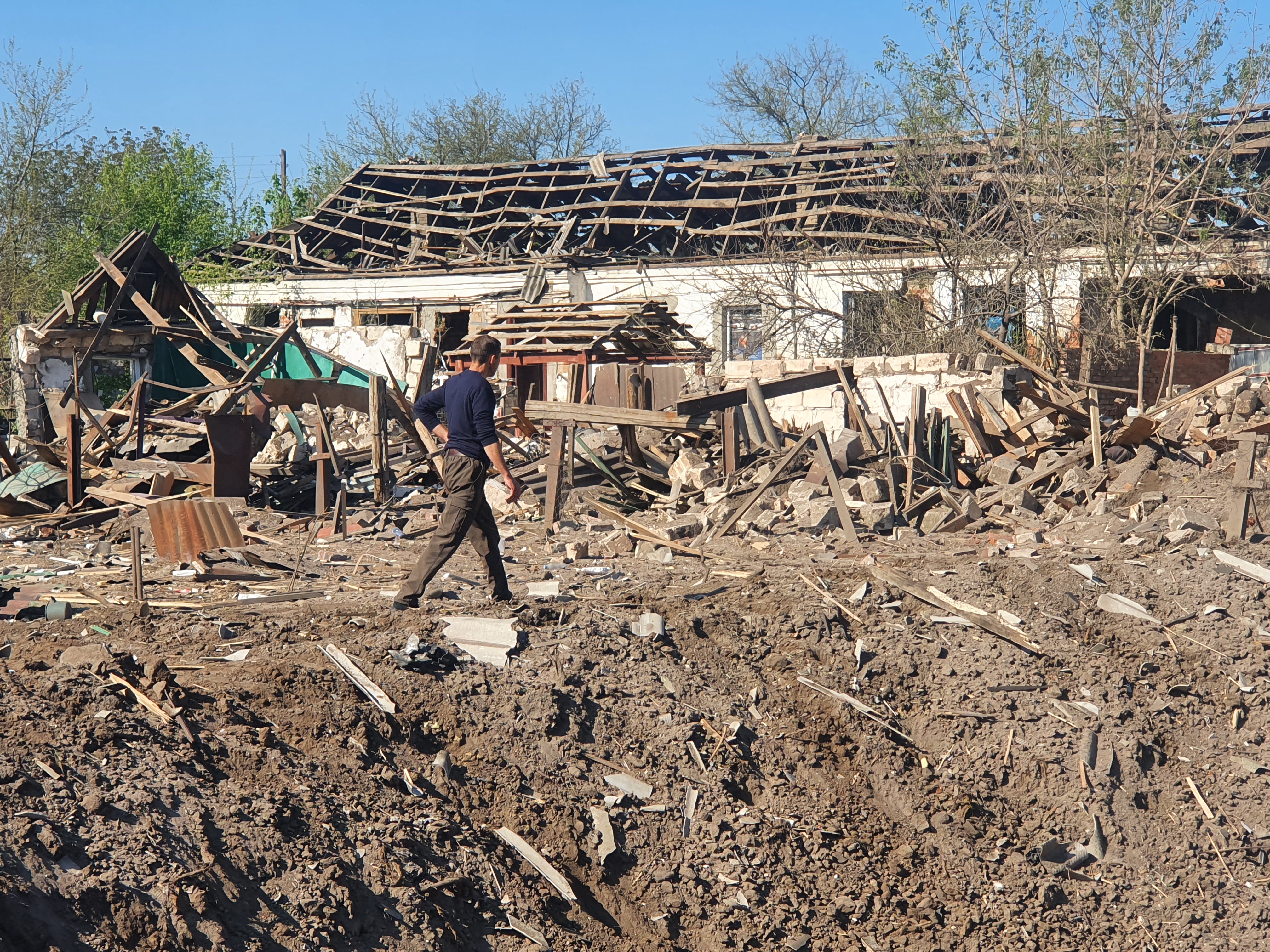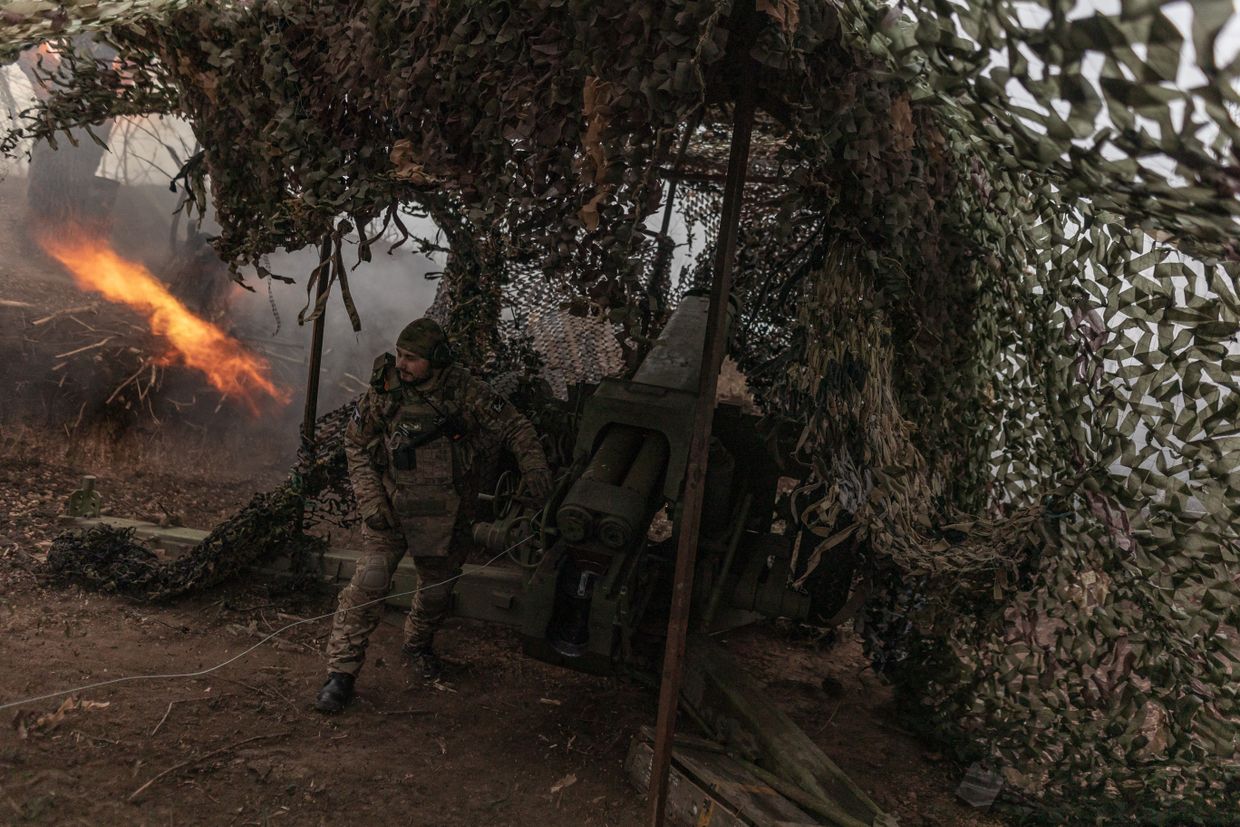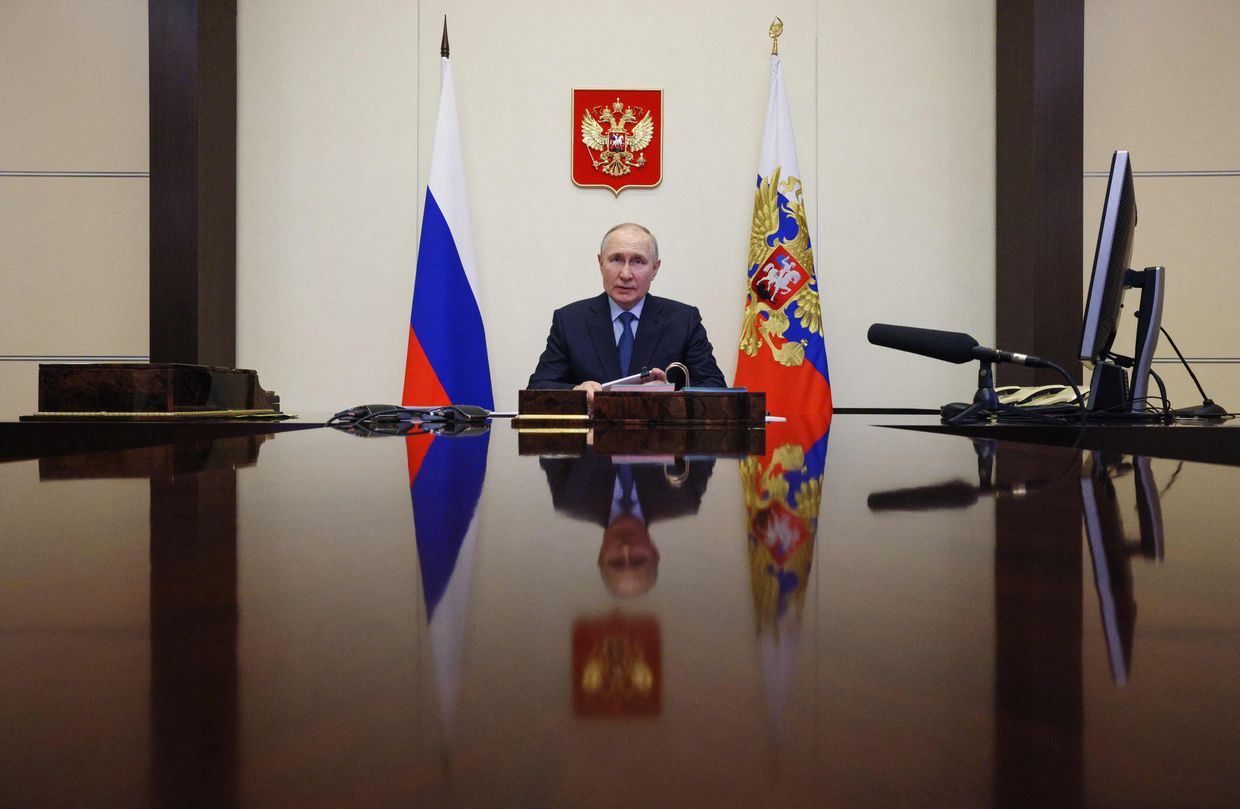KRAMATORSK, Donetsk Oblast — Artur Serdiuk had just climbed under the covers at half past four in the morning, when the Russian airstrike hit 25 paces from his house.
When he opened his eyes and came out from under the dust and debris his ceiling had turned into, he saw that his entire block had been reduced to rubble. Two days later, the Kyiv Independent found him sitting next to the ruins with two neighbors, trying to find humor in the situation. Mercifully, everybody in the area, including his three dogs, survived the attack.
"Nothing was left," said the bulldozer operator in Malotaranivka, a village just outside the city of Kramatorsk. The damage was so devastating that repairs are out of the question. Locals estimate that at least 50 houses were damaged by the strike, judging from the rows of broken roofs.
"I will stay in my basement, at least it's in one piece, and hope for the best," he added, with a chuckle.
Serdiuk’s reaction says it all. Scenes like this are by now gruesomely familiar to everyone that lives here, a scant several dozen kilometers from the fierce fighting that now engulfs Donetsk Oblast. The Russians have rained death on the cities of Kramatorsk, Sloviansk, and other neighboring towns and villages, since the start of the war.
According to Tetiana Tiuryna, the regional government’s spokeswoman, Russian attacks have destroyed more than 68,000 houses and apartment buildings throughout Donetsk Oblast. The lion’s share happened in Mariupol — evacuees told the Kyiv Independent that the city is 100% destroyed. Volnovakha is no different.
Mariupol and Volnovakha are estimated by the Ukrainian government to have had tens of thousands of deaths, with 20,000 expected in Mariupol alone. Elsewhere in the region, there have been 334 civilians killed and 1,013 wounded.
Many of them were killed in Kramatorsk. On April 8, a Russian missile labeled “for the children” hit the Kramatorsk train station where evacuees and other locals had been standing, killing 59 people and wounding scores, including kids.
The situation is made worse by the challenge of providing for people’s needs. Kramatorsk is severely depopulated. According to Ihor Peskov, the press secretary of Kramatorsk mayor Oleksandr Honcharenko, just 20% of the city’s stores and 10% of pharmacies are open. While 60% of doctors continue to work, social services like medical care are stretched thin.
Furthermore, the country is going through a severe fuel shortage, making logistics a nightmare. There’s barely any fuel in Kramatorsk, while gasoline prices in neighboring Dnipropetrovsk Oblast could be as high as $2 per liter. This complicates access to food and medicine.
To survive, people rely on humanitarian aid, volunteers and each other.
Deadly sky
Serdiuk was alone in his home when the bomb hit early in the morning. His wife and daughters are in Germany, “the safest possible place for them.”
Most people have also gone. Tiuryna said that only 35,000 of Kramatorsk’s 200,000 residents remain in the city. In the Malotaranivka village, locals say that about half the population went west.
According to Kateryna Onyshchenko, who coordinates an alliance of charitable funds with 50 volunteers, remaining people largely skew older, and many younger women with children have gone. But some remain. Olha Makovik, her 14-year-old daughter and husband still live in Kramatorsk, having survived a different airstrike.
Makovik’s daughter came to her room in the middle of the night, nervous about booms in the distance. Makovik took her back to her room and sat with her for a while before returning to her bed at 3:30 in the morning.
In what seems to be a local pattern, as soon as she got under the covers, she saw a massive blossom of orange light outside.
"It wasn't a sound. It was... I don't know what it was," she said. "I see something flying above me. At first I thought the ceiling was falling on me. It was the curtain, with the whole window frame and all of the glass, flying over us. And then an end table fell on me.”
Makovik jumped barefoot onto the shard-strewn floor and ran to her daughter’s room to check on her. Somehow, she avoided cutting her feet. Her daughter and husband were fine but the damage was done. The blast seemed to tear holes into every balcony and window, pick up nearby belongings and make them go hurtling out in front of the building into a giant messy pile.
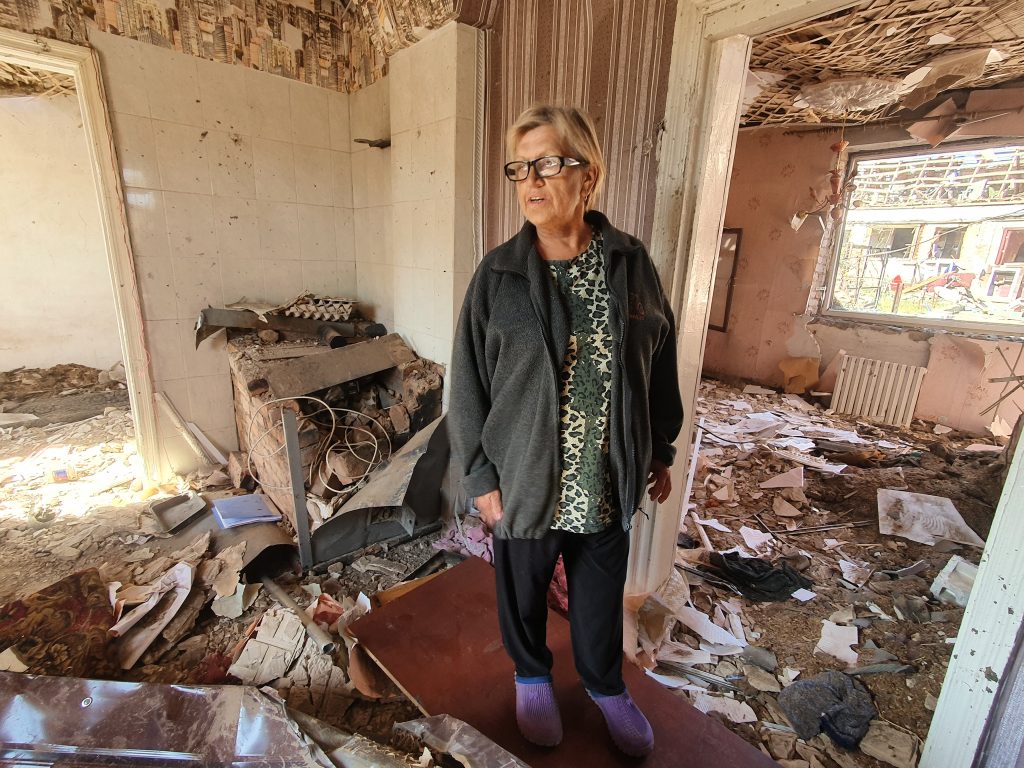
“Grandma” Valentyna, a pensioner from Makovik’s building, who declined to be identified by last name, said that when the balconies and windows exploded, all of the broken glass went into her food stores. “They brought us aid before, I had lots of food stored up, now it’s full of glass,” she said. “How am I supposed to live now?”
Days after the strike, she and several others were outside, picking through the pile, trying to find anything salvageable. Makovik was looking for her wi-fi password, written on a small scrap of paper, making any allusions to needles and haystacks insufficient.
Schools targeted
The strikes hit more than just residential houses. The Kramatorsk train station missile attack was the most horrific in the town’s recent memory. The surgery center at the local hospital was overwhelmed with a tide of trauma patients, a number of whom didn’t survive. Many attacks have also been aimed at the nearby airdrome.
Of the recent strikes, one hit next to the Security Service of Ukraine (SBU) building. Nearby, a different bomb damaged an entire row of businesses on Kramatorsk’s main central avenue, along with a shopping center across the street from a school. Humanitarian workers had been staying in the school building, said Andrei Samyshkin who lives next door.
Schools have been targeted often. Regional administration spokeswoman Tiuryna said that over 350 educational buildings have been hit in the region. Among the latest was a strike against a school in Sloviansk on May 9, as Russia was holding its Victory Day parade in Moscow.
Volodymyr, a retired Ukrainian lieutenant colonel and longtime Kramatorsk resident, said it’s very likely that the Russians are targeting school buildings because they may be housing soldiers — and someone is leaking that to the Russians. From his information, a few schools were hit for that reason.
“Someone gives it out to them,” he said.
While pro-Russian residents lived and most likely continue to live in the oblast, they’ve gone very quiet about their allegiance, he added.
Choosing to stay
The destruction of their homes forces people into a difficult quandary, especially if they don’t have an alternative place to stay.
“No one helps us. The mayor, (Oleksandr Honcharenko of Kramatorsk,) came and he didn't even come in (to see the extent of the damage), just sat on a bench and left," said local resident Olha Devich in Malotaranivka.
Honcharenko’s spokesman Peskov said that when homes are damaged, the city helps them block out their windows or evacuate, which the mayor encourages.
“We don’t have the resources for anything else,” Peskov wrote. “This would also be illogical, as the shelling is only intensifying.”
Another resident, Oleh, who declined to give his last name, recalled “Honcharenko said ‘I warned everyone to evacuate, what are you still doing here?’”
It’s an important question. Some say they simply have nowhere to go. Volunteers encountered this response when they were handing out food to the remaining residents of three nine-story buildings in Kramatorsk damaged by an airstrike that week.
“Where can I go all by myself? It’s all fallen apart and it’s cold at night. I have nobody,” said Valentyna. "I'm 74 years old. Where would I go? To the graveyard."
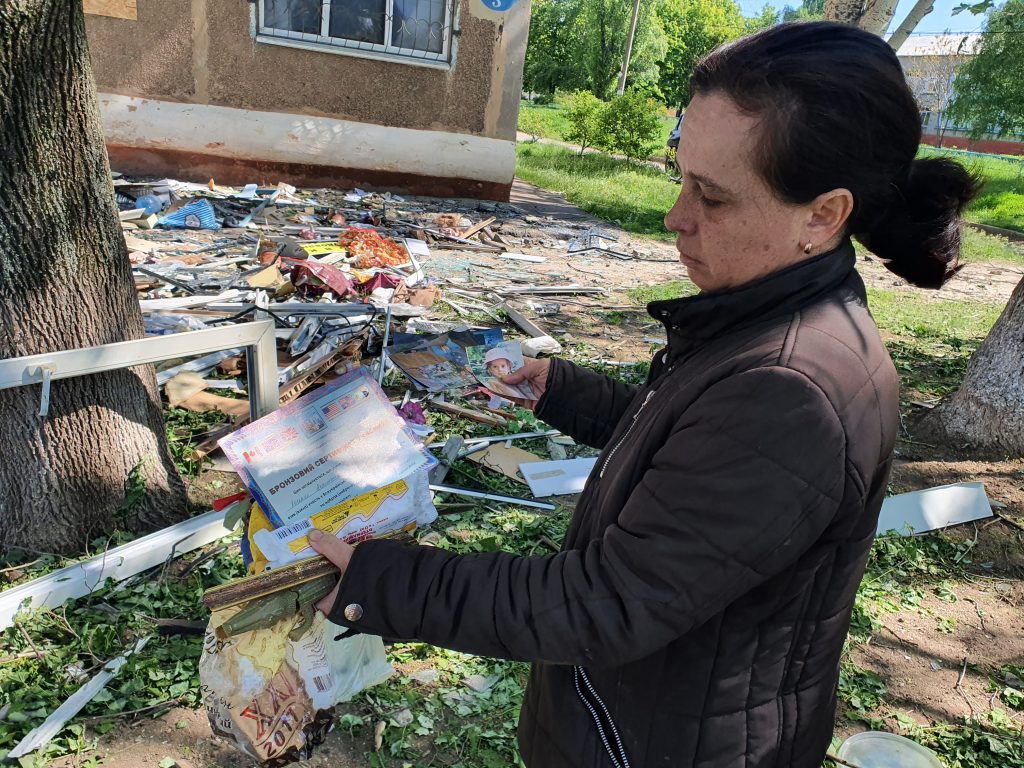
But some of those who have somewhere to go also refuse, either because they cannot bear to leave their life behind or because there are too many people here who depend on them.
“I can’t leave my parents — my father and mother in law are here, plus my home, for which I saved for half my life,” Oleh said. “We have stayed behind because we all worked for something here. To just drop everything and leave is, I think, wrong.”
“We are all here because if we lose our property, it’ll be extremely hard to get it back,” he added. “It’s hard to see the police when darkness falls. We have to take care of one another, otherwise everything would be looted.”
People have to rely on their neighbors to watch their belongings and feed their pets any time they are coming and going. Those that leave the city and come back try to bring supplies like food and medicine to others. Even bread is in short supply in Kramatorsk.
Access to food is a pressing issue.
“We’ve had to resuscitate people who had passed out from hunger,” said Onyshchenko, who coordinates an alliance of charitable funds. “I saw people go into hysterics about food. It’s a panic… when they know they have nothing to eat tomorrow.”
The government and volunteers try to fill that gap, including Onyshchenko’s group of organizations, which have goods delivered to their warehouses in Kramatorsk before distributing them. In areas near the front line, aid is given to police, along with people’s addresses, and they take it the rest of the way.
Moving aid by road is limited. With the country’s fuel shortage, deliveries by motor vehicles can have up to twice the cost of the aid itself.
Despite all that and Russia’s army working on the bloody conquest of Donetsk Oblast, some Kramatorsk residents have started to return, Onyshchenko said.
“I see people coming back. Many barber shops, bed and breakfasts, and small shops that were previously closed are now reopening. Many people just left the center of the city for the outskirts,” she said.
“Their money ran out and now they have no livelihood,” she explained. “That’s the main reason why they are not in other cities.”




